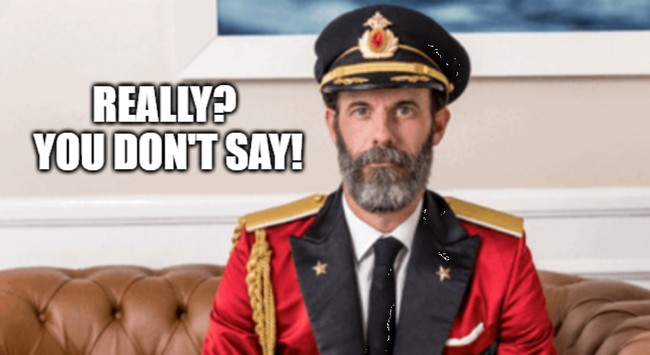
spectator.org
A Dog’s Grave
The eighteenth-century Hellenist Johann Joachim Winckelmann maintained that the “finest and most beautiful drawing in the world” could be found on the surface of the Meidias Hydria, a red-figured water jar attributed to the fifth-century Athenian potter Meidias, and today found in the veritable Wunderkammer that is Room 19 of the British Museum. Often have I looked upon the Meidias Hydria, with its marvelously detailed depiction of the abduction of the Leukippides, but whether it truly is the “most beautiful drawing in the world,” or even the most beautiful specimen of Greek vase-painting, remains open to debate.
And now we have adopted another shelter dog, Mina, part dachshund and part Jack Russell terrier, a huntress who now patrols our yard.
Another work by the same painter, a red-figured lekythos (oil vessel) showing the birth of Erichthonios, now in the Cleveland Museum of Art, is no less remarkable, and other red-figure painters, like Euphronios, Euthymides, the Berlin Painter, and the Marsyas Painter, could all match Meidias brushstroke for brushstroke. And the Museum of Fine Arts in Boston has a red-figure calyx krater by the Dokimasia Painter depicting the murder of Agamemnon, a vessel which seems to me superior to the Meidias Hydria in most every way — with all due respect to Herr Winckelmann.
Yet one of the most affecting examples of that particular art form can be found not in the Louvre, the Pergamonmuseum, the Getty, the Fitzwilliam, or any of the other world-class collections of classical art you might care to mention, but in the Kelsey Museum of Archaeology, located on the University of Michigan’s central campus in Ann Arbor. It is an Apulian volute krater, two-handed with red-figured decoration, produced by the anonymous Gioia del Colle Painter around 340 B.C., and featuring the image of a young man reunited in the afterlife with his faithful canine companion.
Most of us have never witnessed a violent mythical abduction, or the miraculous birth of a king from the unwanted seed of a god, or the murder of a proud monarch by his wife and her lover, but many of us are quite familiar with the relationship between a master and a hound, and with the nature of bereavement, and it is for this reason I find the krater at the Kelsey Museum, with its human scale and subject matter, so profoundly moving.
At the center of the Gioia del Colle Painter’s composition is a youth seated in a naiskos, a small tomb building or temple, surrounded by grieving gift-bearers and libation-pourers. The deceased still has a spear in his hands, a sheathed sword at his side, and a military chlamys (cloak) pinned with a fibula at his left shoulder, but his fighting days are evidently over, since his bronze greaves and helmet have been hung up with care, never to be worn again, never again to produce the “earth-clash of bronze armor,” as it says in the Iliad.
At his feet sits his dog, likely a member of the Lakonikoí Kýnes breed, the sort of swift Laconian hound made famous by Homer (the “swift-footed” Argos, loyal to Odysseus unto death) and Shakespeare (the hounds of Theseus “are bred out of the Spartan kind,” we are told). With his right hand the dead youth reaches out to his dog, who is seated obediently on its haunches, calmly gazing back at its owner with utter devotion. What better companion, for a soldier and a hunter at least, could there be in the underworld?
How the ancient Greeks and Romans adored their dogs, a fondness we find ample evidence for in the touching epitaphs they had engraved on the headstones of their dead pets:
This is the tomb of the dog, Stephanos, who perished, whom Rhodope shed tears for and buried like a human. I am the dog Stephanos, and Rhodope set up a tomb for me.
Here the stone says it holds the white dog from Melita, the most faithful guardian of Eumelus; Bull they called him while he was yet alive; but now his voice is prisoned in the silent pathways of night.
Surely even as thou liest dead in this tomb I deem the wild beasts yet fear thy white bones, huntress Lycas; and thy valor great Pelion knows, and splendid Ossa and the lonely peaks of Cithaeron.
Thou who passest on this path
If haply thou dost mark this monument,
Laugh not, I pray thee, though it is a dog’s grave.
Tears fell for me, and the dust was heaped above me
By a master’s hand.
I am in tears, while carrying you to your last resting place, as much as I rejoiced when bringing you home in my own hands fifteen years ago.
In the very origins of our civilization, we find the relationship between master and hound already perfected. And here I am reminded of one of G.K. Chesterton’s finest essays, “On Keeping a Dog,” from February of 1911. Inspired by the “innovation which I of late introduced into my domestic life; he is a four-legged innovation in the shape of an Aberdeen terrier,” Chesterton described how “if the dog is loved he is loved as a dog; not as a fellow-citizen, or an idol, or a pet, or a product of evolution.”
Somehow this creature has completed my manhood; somehow, I cannot explain why, a man ought to have a dog. A man ought to have six legs; those other four legs are part of him. Our alliance is older than any of the passing and priggish explanations that are offered of either of us; before evolution was, we were. You can find it written in a book that I am a mere survival of a squabble of anthropoid apes; and perhaps I am. I am sure I have no objection. But my dog knows I am a man, and you will not find the meaning of that word written in any book as clearly as it is written in his soul.
For Chesterton, it is in this symbiotic relationship between master and hound that we are at our most civilized:
It may be written in a book that my dog is canine; and from this it may be deduced that he must hunt with a pack, since all canines hunt with a pack. Hence it may be argued (in the book) that if I have one Aberdeen terrier I ought to have twenty-five Aberdeen terriers. But my dog knows that I do not ask him to hunt with a pack; he knows that I do not care a curse whether he is canine or not so long as he is my dog. That is the real secret of the matter which the superficial evolutionists cannot be got to see. If traceable history be the test, civilization is much older than the savagery of evolution. The civilized dog is older than the wild dog of science. The civilized man is older than the primitive man of science. We feel it in our bones that we are the antiquities, and that the visions of biology are the fancies and the fads. The books do not matter; the night is closing in, and it is too dark to read books. Faintly against the fading firelight can be traced the prehistoric outlines of the man and the dog.
Anyone who has lost a beloved pet understands the profound nature of this bond, one which stretches back to time immemorial, long before biologists sought to explain the human-canine relationship with recourse to oxytocinergic systems and socio-positive interactions and what have you. We recently lost our cherished dog, a long-haired dachshund named Magnus, adopted from a local shelter, who spent his many years with us defending our garden, red in tooth and claw if need be, from possums, rabbits, squirrels, chipmunks, rats, and short-tailed shrews, but otherwise curled up either in our leather writer’s chair, or in front of the fireplace, just like Chesterton’s prized Scottish terrier. His death was devastating. Lord Byron’s memorialized his Landseer dog, Boatswain, as one who
who possessed Beauty without Vanity,
Strength without Insolence,
Courage without Ferosity,
and all the virtues of Man without his Vices.
This praise, which would be unmeaning Flattery
if inscribed over human Ashes,
is but a just tribute to the Memory of
Boatswain, a Dog
And the very same could be said of our own dearly-missed hound. When Argentina’s President Javier Milei lost his English mastiff Conan — his “true and greatest love,” his “friend and confidant,” “literally a son to me” — he insisted that his pet’s demise was merely “a physical disappearance,” and that he could still communicate with Conan, even using him as a intercessor between himself and the Almighty. Some might scoff at these unorthodox beliefs, but true cynophiles are more likely to understand.
My Dog, Forever
Magnus now rests beneath a mound of earth, in the shade of a gently swaying Korean fir, surrounded by the daylilies and ground elder and fallen leaves through which he snuffled and hunted. I would like to think his white bones still strike fear into the hearts of the vermin that threaten our vegetable patch, even if his voice has been imprisoned in the silent pathways of the night. And now we have adopted another shelter dog, Mina, part dachshund and part Jack Russell terrier, a huntress who now patrols our yard, yet enjoys nothing more than sitting and gazing lovingly into our eyes, in a posture identical to that of the Laconian hound so exquisitely rendered by the Gioia del Colle Painter on his volute krater.
Chesterton marveled at how “one loves an animal like a man instead of merely accepting an animal like an optimist” — and it is precisely that sort of love that really ought to extend beyond the confines of this life and into the hereafter, where we will, with any luck, find ourselves seated beneath the ample roof of a naiskos, in the company of our faithful guardians, forevermore.
READ MORE from Matthew Omolesky:
Chopin Intime
Confronting the Shadows: Shūsaku Endō’s Rediscovered Masterpieces
Sede Vacante: China’s Provocations Against the Vatican
The post A Dog’s Grave appeared first on The American Spectator | USA News and Politics.










 Rumble
Rumble


